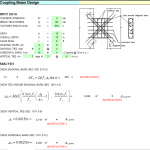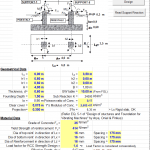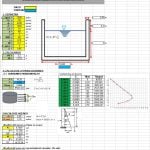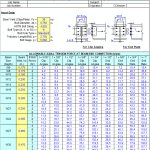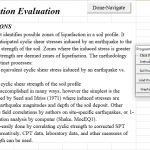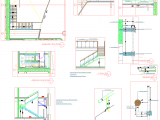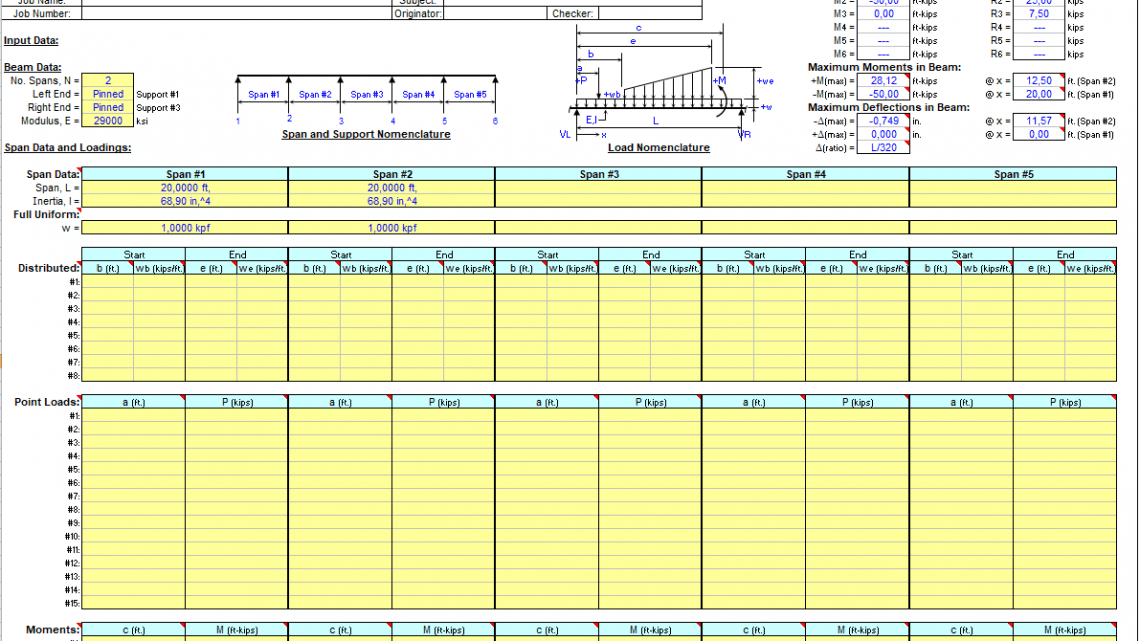
Continuous Span Beam Analysis Spreadsheet
7 May 2025Table of Contents
Continuous Span Beam Analysis Spreadsheet
What Is a Continuous Span Beam?
A continuous span beam is a structural element that extends over more than two supports without interruption. Unlike simply supported beams that span between only two points, continuous beams are supported at three or more points, providing greater strength and structural efficiency. These beams are commonly used in bridges, buildings, and other long-span structures where minimizing deflection and increasing load capacity are essential.
Key Advantages of Continuous Span Beams
1. Increased Structural Efficiency
One of the primary benefits of a continuous beam is its enhanced strength. Because the load is distributed over multiple supports, the beam experiences less bending moment, resulting in a more efficient design and reduced material usage.
2. Reduced Deflection
Continuous beams naturally limit mid-span deflection. This makes them ideal for floors and bridges, where controlling movement and vibration is critical for comfort and safety.
3. Improved Load Distribution
By spreading loads across multiple supports, continuous span beams offer better performance under variable and dynamic loads. This ensures better resilience in high-traffic or heavy-load areas.
4. Cost-Effective Design
Although the analysis and construction of continuous beams may be more complex, the savings in material and enhanced performance often result in overall cost-effectiveness.
Common Applications of Continuous Beams
Continuous span beams are widely used in civil and structural engineering projects, including:
-
Bridge Construction: Multi-span bridges use continuous beams to support long stretches of roadway, reducing the need for excessive piers or columns.
-
Commercial Buildings: Office floors and large open spaces benefit from the structural stability offered by continuous beams.
-
Residential Construction: Modern homes with open-plan layouts often rely on continuous beams for long-span roof and floor systems.
-
Industrial Facilities: Warehouses and factories utilize continuous beams to support heavy equipment and provide unobstructed floor areas.
Materials Used in Continuous Beams
The most common materials include:
-
Reinforced Concrete: Offers excellent compression resistance and is widely used in bridges and high-rise buildings.
-
Steel: Ideal for long spans and quick installation; often used in industrial and commercial projects.
-
Prestressed Concrete: Used where very long spans or high load capacities are required, especially in bridge construction.
Design Considerations
Engineers designing continuous beams must account for:
-
Support conditions
-
Load types (live, dead, wind, seismic)
-
Span lengths and ratios
-
Material behavior under stress
-
Moment redistribution and continuity effects
Finite element software or structural analysis tools are commonly used to model and optimize continuous span designs.
Conclusion
A continuous span beam is a powerful solution for long-span structural needs, offering superior performance, cost savings, and reliability. Its ability to distribute loads efficiently makes it a preferred choice in both modern architecture and heavy civil infrastructure.
For engineers, architects, and builders aiming for long-lasting, efficient structures, understanding and utilizing continuous beams can significantly elevate the quality and safety of their projects.

